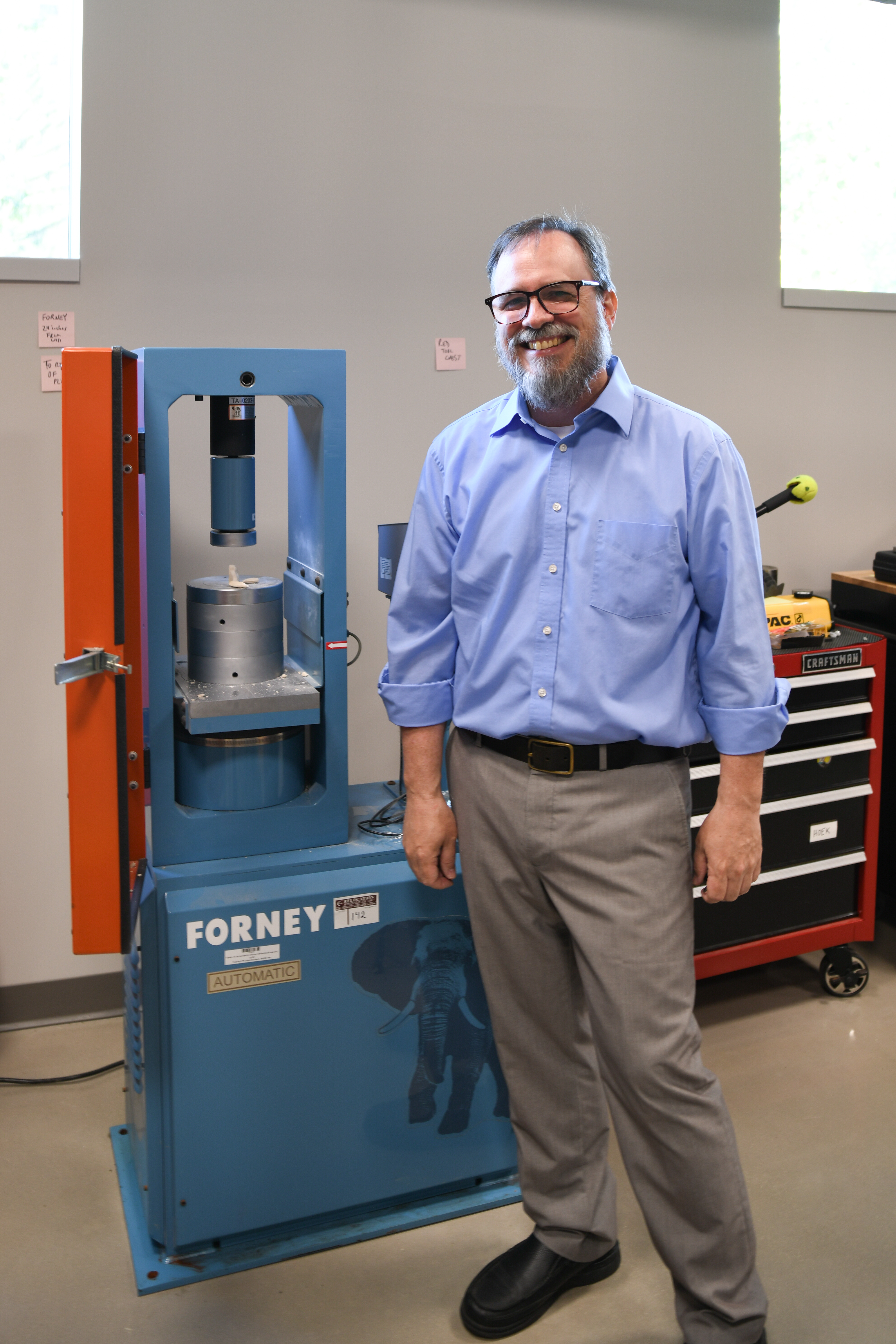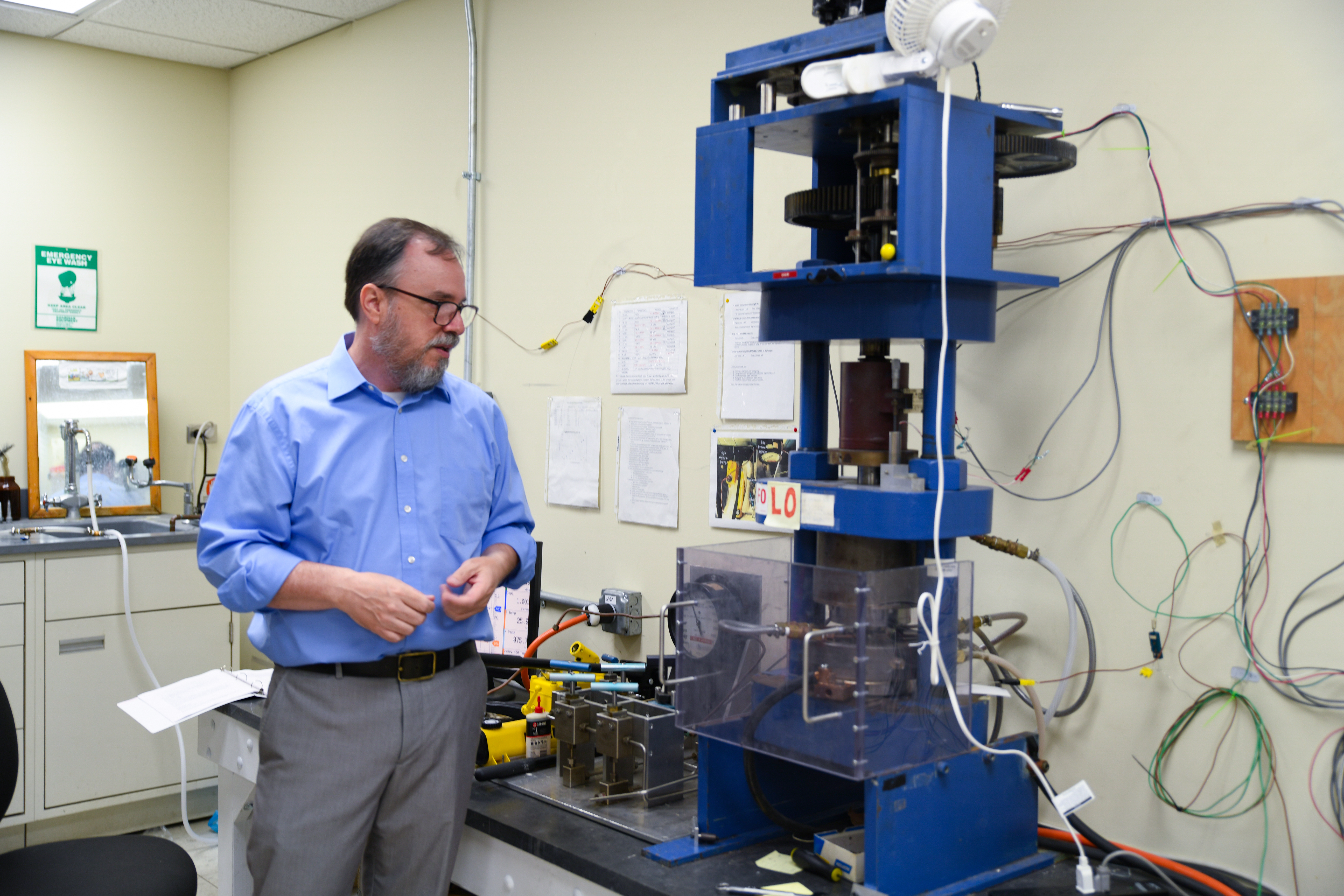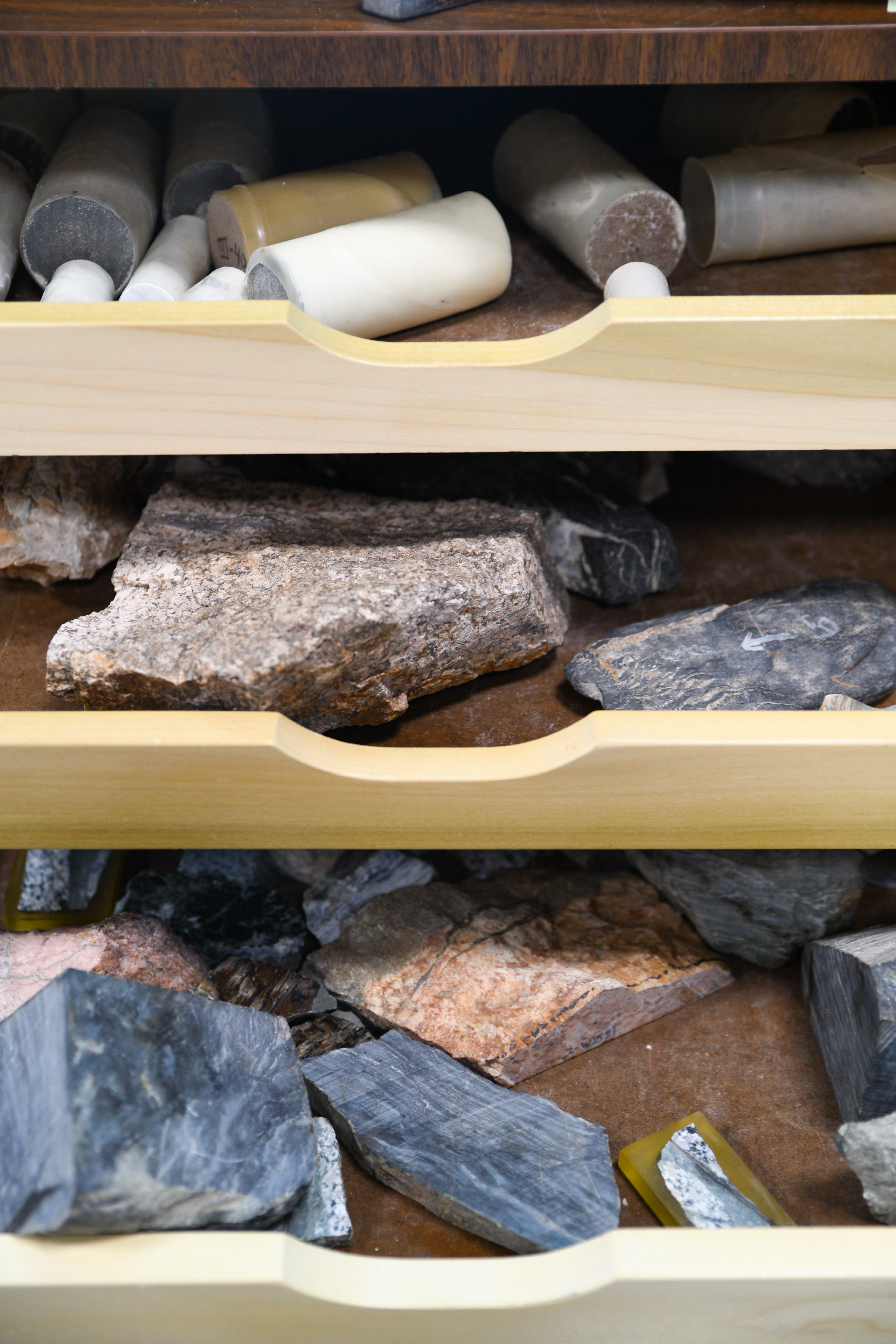Although Ohio is not known as the earthquake capital of the country, some serious earthquake analysis happens right here at The University of Akron (UA).
 Dr. Holyoke in his new lab in Crouse Hall.
Dr. Holyoke in his new lab in Crouse Hall.Dr. Caleb Holyoke, associate professor of geology, has developed a state-of-the-art rock deformation lab on campus where students develop and test hypotheses about how rock properties affect rock strength and earthquakes using a variety of equipment. His focus is not only on the loud bang that accompanies earthquakes, but also on the quieter, deeper aspects of the earthquake cycle in between the loud bangs in the Earth's crust.
Students regularly occupy the geology labs, using the equipment for laboratory exercises in their courses and individual research projects. Upper-level undergraduates use the Forney FX-300, a repurposed concrete strength testing machine, to perform experiments on rocks or rock analogs to test how different properties, such as grain size or grain alignment, affect the strength of rocks. The strength of the rock is related to the magnitude of the earthquake; strong rocks make large earthquakes! The students get to deform rocks collected from various worldwide locations, including Scotland, the Italian Alps, South Dakota's Black Hills, Eastern Wyoming and Berea sandstone from a nearby quarry in Ohio.
“If we get students involved with doing things with their hands in labs, those students get excited about deforming rocks or looking at sediments and understanding how the Earth works,” said Holyoke. “That’s what drives the Department of Geosciences.”
.jpg)
Middle photo: Group picture from this past year’s Field Camp II course (Seminoe State Park, Seminoe Mountains in Wyoming)
Bottom photo: Experimental and natural fault rocks are displayed in drawer.
.jpg)
The Advanced Structural Geology course involves coring rocks and conducting various tests on them. Multiple pieces of equipment are utilized to understand the different properties of the rocks.
One unique machine used is the Griggs Apparatus, which is utilized for high-pressure rock deformation experiments. Only 15 labs worldwide, including The University of Akron, have this machine.
Dr. Holyoke recently received a National Science Foundation grant for $359,704 to perform an integrated field and experimental study investigating how water loss may strengthen the Earth's lower crust and lead to earthquakes in locations where they don’t normally occur. The grant will also help fund research efforts by current UA students. One undergraduate student, Nadilee Nottingham of Ashtabula Twp., Ohio, has already begun working on her honors thesis with this grant funding. The project, lasting three years, will include field work in a remote area in Saskatchewan, Canada, over the course of two summers to study the formation of 2.8-billion-year-old pseudotachylyte, a rock formed by melting the sliding rock surfaces during a large earthquake.
The Department of Geosciences is excited to be back in the newly renovated Crouse Hall this fall. For the past two years, the department has been located across various buildings on campus while construction has taken place. With the new building, everything is centralized, creating a more connected and efficient environment for students and researchers.
“One of the things that’s important to us in our department is that we have a lot of undergraduates who come through these labs. Many of these students end up working on senior research projects. In my eight-year tenure, I've had roughly 20undergraduate students working on various rock formation projects,” said Holyoke. “It’s great to have everything back in Crouse. I am glad to be back in our home."
Story by Bree Sabin
